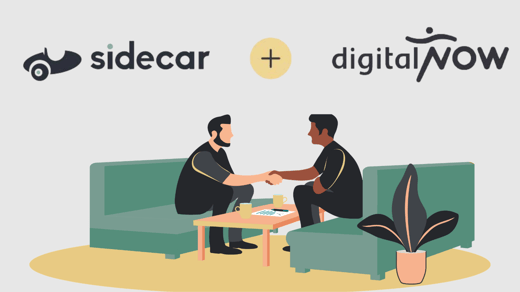Design Thinking is about a starting point.
In the face of a problem, a challenge or a task to be completed, finding the most effective solution is not just a matter of choosing the route. It involves establishing the starting line.
Design Thinking is a problem solving process that starts with adopting the position of the person, customer or audience for whom you are thinking about a solution – and it is an approach my association, Healthcare Financial Management Association, has started employing to solve specific problems.
To engage in Design Thinking is to place the human at the beginning and at the center of your approach: to put yourself in the shoes, and walk along the path, of the person or people affected. From there, the process of problem solving becomes a human-centered, open-minded one.
This involves cultivating an empathetic mindset. A mindset that truly empathizes with the perspective and experiences of those most involved in the problem can completely change the direction and the range of your problem-solving path: New questions emerge, new frames through which to understand the context are constructed, and new insights are formed.
One of the most interesting examples of this comes out of the Stanford Design School. They were given a project aimed at helping local farmers in Myanmar improve their crop yields. As an agricultural problem, it seems intuitive to approach this issue by framing the question in terms of possible agricultural solutions: What seeds might we introduce? What irrigation methods? The team, however, used empathy as the basis to their approach, and instead spent time observing how the farmers worked. They discovered that the farmers worked deep into the night, or early in the morning, without electricity. Depending on kerosene lamps to see their crops, they were breathing in fumes that made them sick.
Rather than producing an agricultural solution, the Stanford team designed a solar-powered headlamp – which worked to improve the farmers’ yields by cutting out the issue of kerosene pollution and allowing the farmers to work more efficiently.
If the people at Stanford had approached this problem with a pre-defined question, they might have come to a completely different answer. They might have focused only on the land, rather than on the way real human beings were interacting with it.
Because Design Thinking is about a new empathetic starting point, it means the journey you then embark on is uniquely flexible. There is no inscribed, compulsory methodology; there is just a simple high-level structure.
The rudimentary steps of Design Thinking are:
- Empathy throughout the discovery process
- Definition of the challenge
- Ideation of the route you will take
- Prototyping to test out your ideas (your prototype can be made out of anything — from duct tape to PowerPoint slides — the important thing is you use different iterations of your idea to refine it into something viable and scalable)
This flexibility stems from the fact that there are a multitude of ways to build empathy, and to turn that empathy into a defined account of the challenge you are facing. Building empathy is a learning process, and thus it involves being led by, in order to be taught by, other people.
This might all sound a little too qualitative: what do people’s experiences, emotional reactions and personal insights offer in terms of concrete information? But in fact, throughout the empathetic discovery process, quantitative material starts to appear.
Even if you are a small organization, you cannot afford not to understand your members or customers intimately. It is a time-consuming thing to do Design Thinking right, but you have to believe in the process. How you act upon the insights it reveals, and the ideations you construct based on your discoveries, isn’t something I can prescribe to you. But empathy, an open mind and a human-centered approach will change the nature and scope of your problem-solving process in surprising and significant ways.
So how did we employ Design Thinking at my association? How did we draw quantitative conclusions from an apparently qualitative process?
Tags:
Empower Yourself
August 14, 2017


